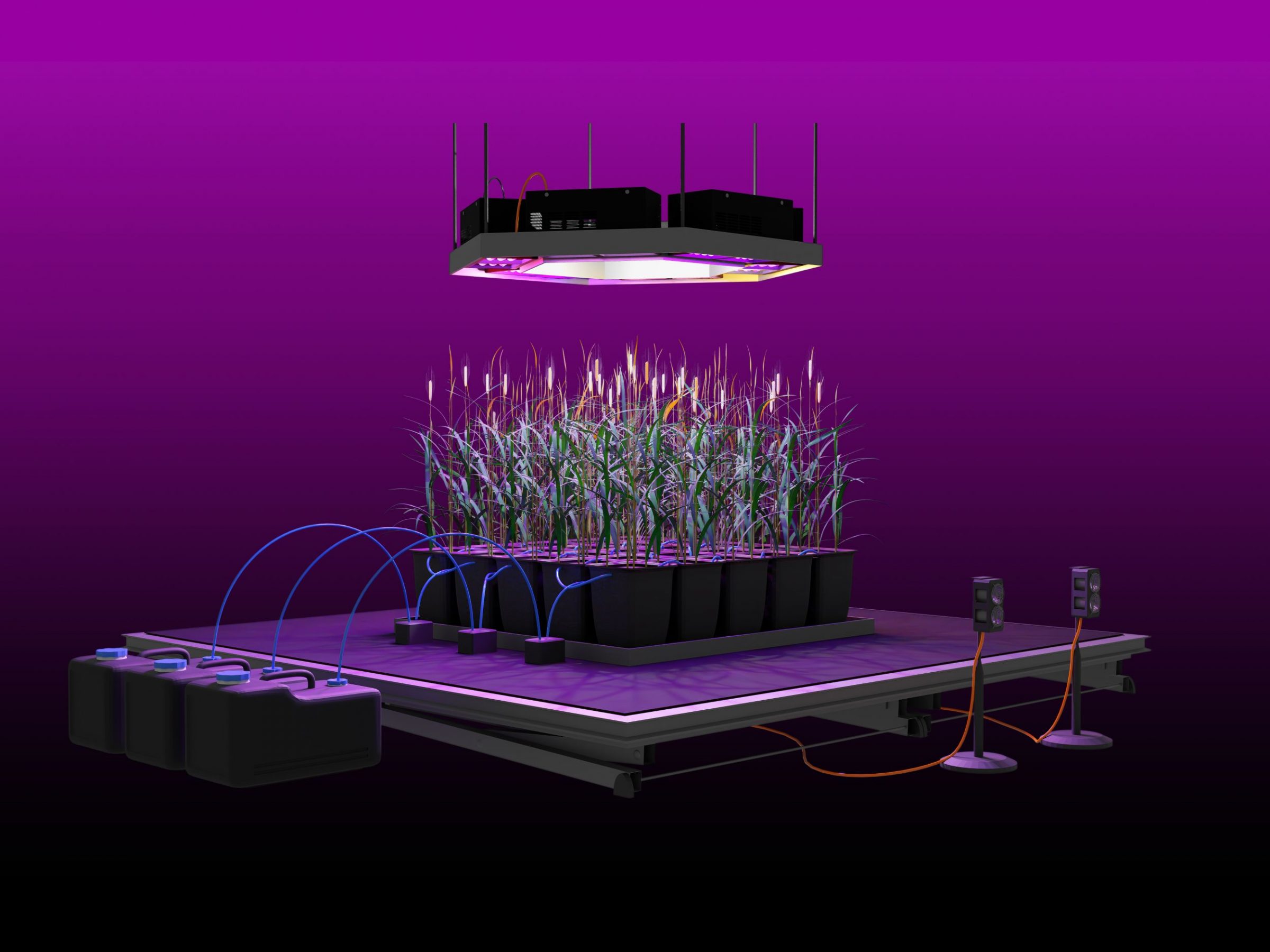
Meta.Morf 2022 – Ecophilia / TEKS.studio / Exhibition May 7 – July 31 /
Curator: Zane Cerpina / Co-curator: Espen Gangvik
LIFE SUPPORT SYSTEM (AKA THE FARM)
DISNOVATION.ORG [PL/FR/DE]
This artistic provocation seeks to estimate the orders of magnitude of critical ecosystem services fundamental to all planetary life processes.
It is common to describe our relationships with society, the world, and the biosphere with metaphors from economics, which has specific understandings of value. With regard to the biosphere, today’s prevailing economics conventions are unable to recognize intrinsic value to the ecosystems on which all life depends. In cultures overdetermined by concepts from economics, we are left without adequate discursive instruments to socially or politically address the importance of the work of the biosphere.
The Life Support System experiment consists of 1 square meter of wheat, cultivated artificially in a closed environment. All inputs such as water, light, heat, and nutrients are measured, monitored and displayed for the public. This one square meter unit of Life Support System is capable of furnishing 1 day’s worth of necessary caloric nutrition for one human adult every 4 months. To feed a single human adult all year would require approximately 100 such units running concurrently. This procedure makes palpable the orders of magnitude, of material and energy flows, that are required to reproduce human nutritional requirements in closed or artificial environments, in contrast to outdoor agriculture on arable land. This indoor farm experiment is a counter-example which points to the vastness of the ecosystem contributions involved in conventional agriculture, that defy conventional economic reductionism.
By attempting to grow, in a closed environment, a staple food like wheat, which has historically provided the greatest proportion of necessary caloric intake for humans in Europe, this experiment provides a sense of scale of ecosystem contributions that are poorly acknowledged under the current economic conventions.
The empirical true-cost estimates obtained through this indoor experiment are about 200€ per kilogram of wheat, an extravagant cost compared to the 15 cent per kilogram current market price. Though hydroponics can be used for certain plants, for necessary caloric nutrition there is as yet no economically justifiable replacement for conventional agriculture embedded radically and immanently in the biosphere.
This experimental farm foregrounds the incalculable ecosystem services demands of conventional agriculture which we expect to access for free. On the other hand, closed environments must artificially reproduce these services at high social, energy and ecosystem costs which are mostly not accounted for. From a much broader perspective, this art experiment provides a speculative reference for a reckoning of the undervalued and over-exploited work of the biosphere. Ecosystem processes provide the primary value at the core of each of our daily economic interactions within society.
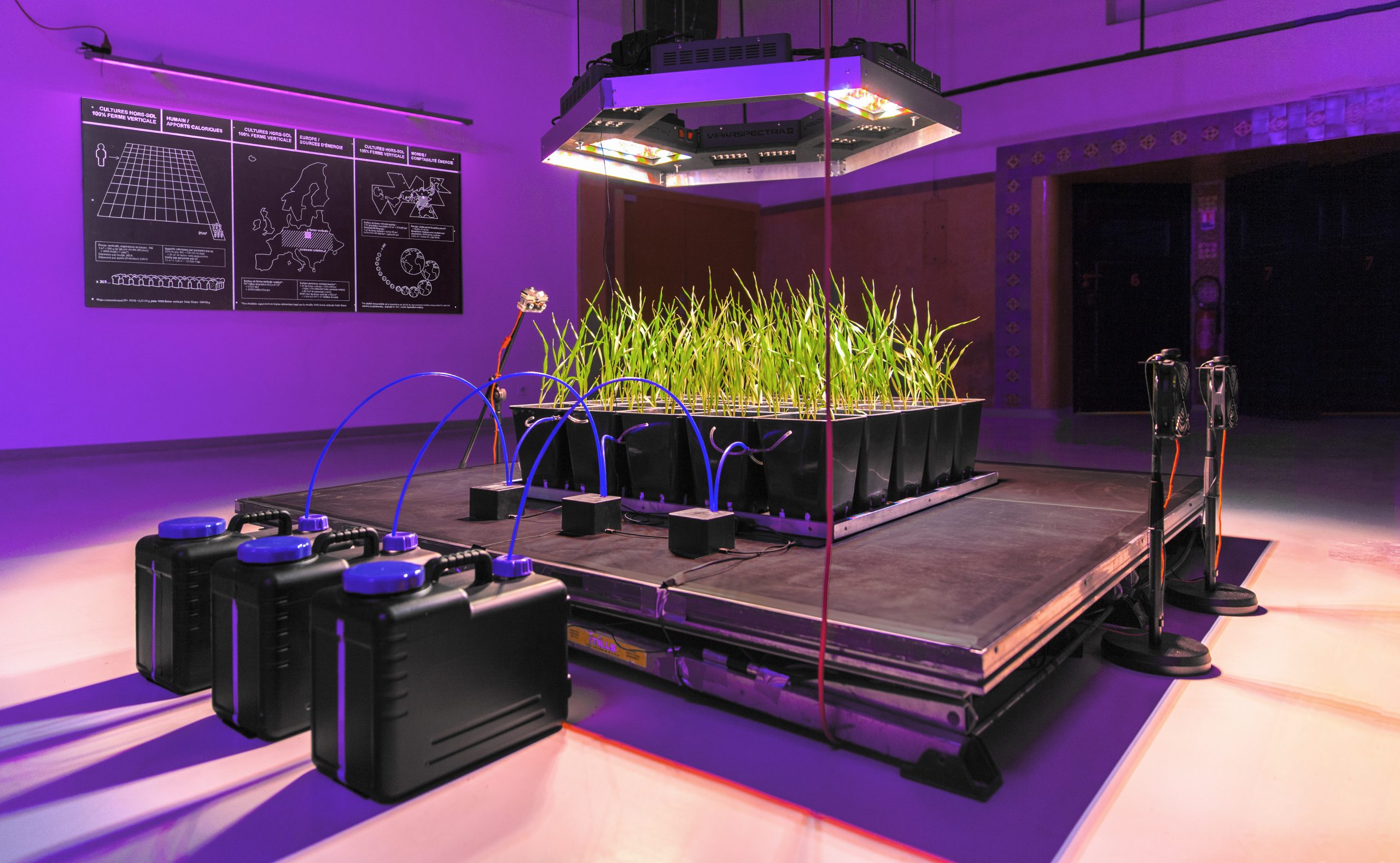
Credits:
Conception: DISNOVATION.ORG & Baruch Gottlieb
Web developer: Jerome Saint-clair
Prototype developers: Vivien Roussel, Thomas Demmer
Production: iMAL (BE) | Coproduction: Biennale Chroniques (FR)
Format:
Installation, 1m2 of automated cultivation, LED grow lights, camera, live video streaming
DISNOVATION.ORG
 Founded in 2012 by Nicolas Maigret and Maria Roszkowska, DISNOVATION.ORG is both an art collective and an international workgroup engaged in the crossovers between contemporary arts, research and hacking. Artist and philosopher Baruch Gottlieb joined the collective in 2018. Together, they develop situations of interference, discussion and speculation that question dominant techno-positivist ideologies in order to foster post-growth narratives. Their research is expressed through installations, performances, websites and events. They recently co-edited A Bestiary of the Anthropocene, an atlas of anthropic hybrid creatures, and The Pirate Book, an anthology about media piracy.
Founded in 2012 by Nicolas Maigret and Maria Roszkowska, DISNOVATION.ORG is both an art collective and an international workgroup engaged in the crossovers between contemporary arts, research and hacking. Artist and philosopher Baruch Gottlieb joined the collective in 2018. Together, they develop situations of interference, discussion and speculation that question dominant techno-positivist ideologies in order to foster post-growth narratives. Their research is expressed through installations, performances, websites and events. They recently co-edited A Bestiary of the Anthropocene, an atlas of anthropic hybrid creatures, and The Pirate Book, an anthology about media piracy.
Their work has been presented at numerous art centers and festivals internationally such as Centre Pompidou (Paris), Transmediale (Berlin), the Museum of Art and Design (New York), Palais de Tokyo (Paris), FILE (Sao Paulo), ZKM (Karlsruhe), Strelka Institute (Moscow), ISEA (Hong Kong), Elektra (Montréal), China Museum of Digital Arts (Beijing), and the Chaos Computer Congress (Hamburg). Their work has been featured in Forbes, Vice, Wired, Motherboard, Libération, Die Zeit, Arte TV, Next Nature, Hyperallergic, Le Temps, Neural.it, Digicult, Gizmodo, Seattle Weekly, torrentfreak.com, and Filmmaker Magazine among others.
DISNOVATION.ORG
Header Graphics: “Life Support System” by DISNOVATION.ORG.
Production: iMAL Brussels (BE) | Coproduction:Biennale Chroniques, Aix-en-Provence (FR) | With The Support Of: Production Intérieure Brute (FR), ArTeC Paris (FR), Le Labomedia Orléans, (FR) CNC (Dicréam)(FR), University of California Irvine (USA)
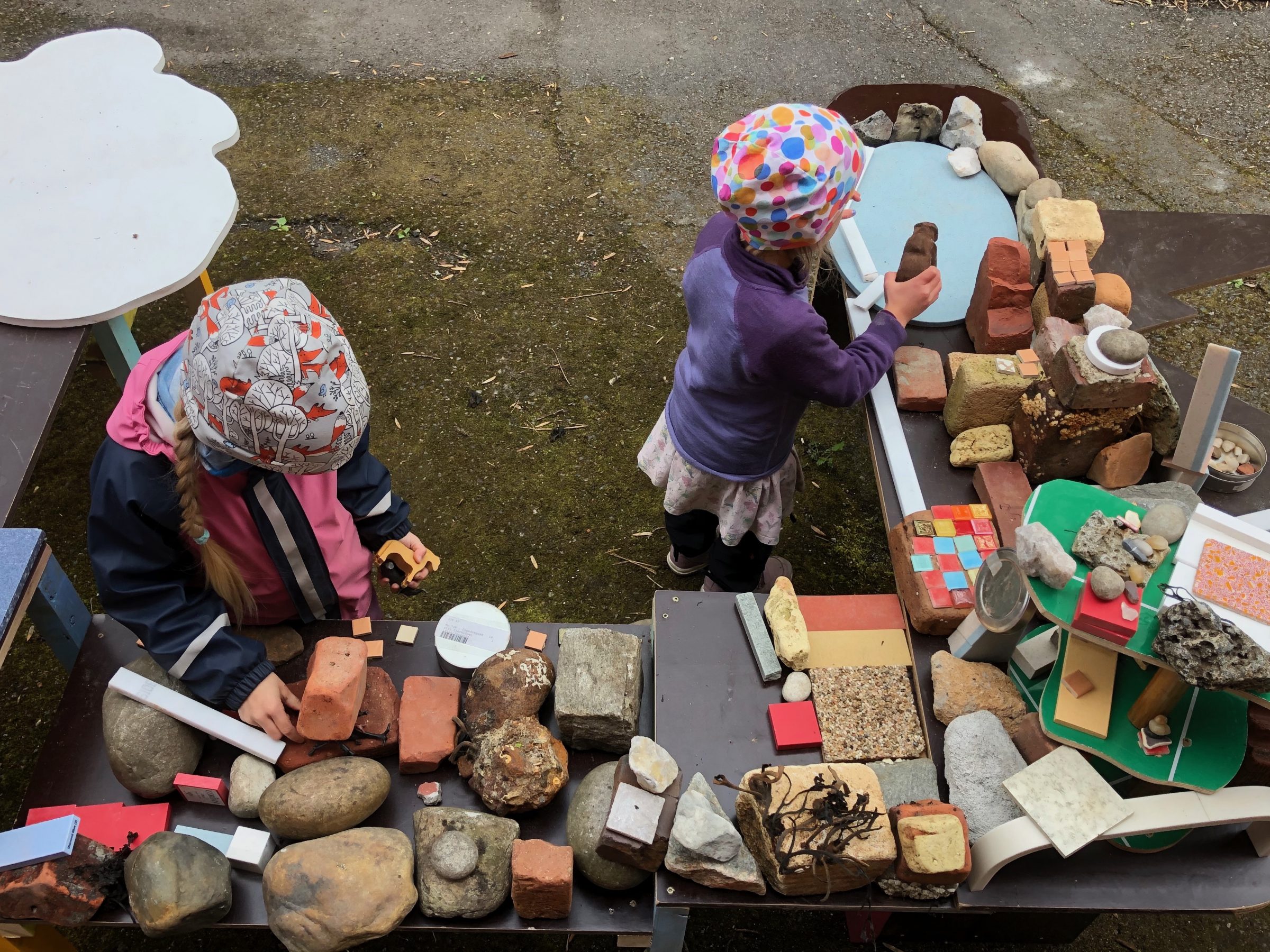
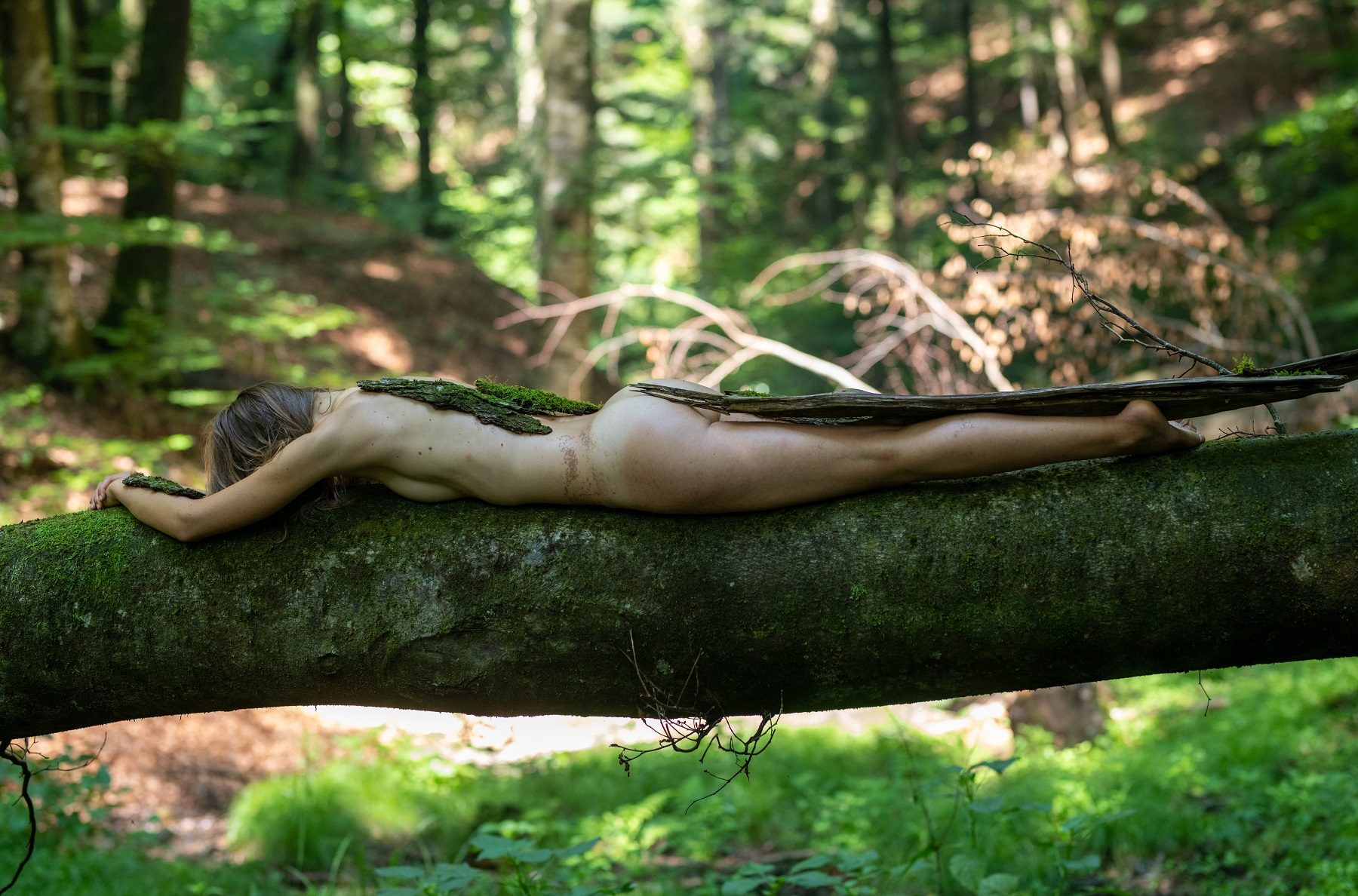
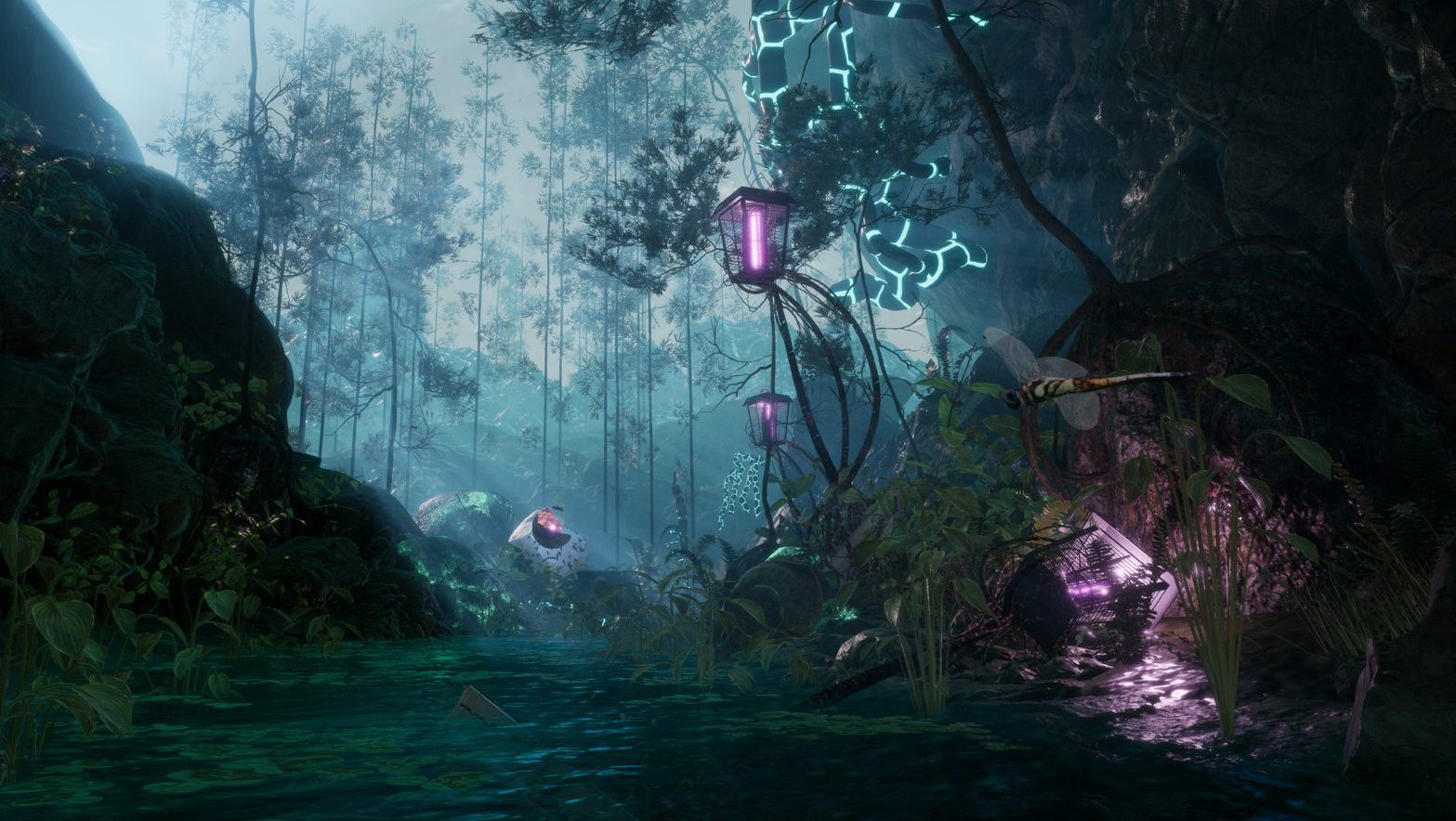


 Founded in 2012 by Nicolas Maigret and Maria Roszkowska, DISNOVATION.ORG is both an art collective and an international workgroup engaged in the crossovers between contemporary arts, research and hacking. Artist and philosopher Baruch Gottlieb joined the collective in 2018. Together, they develop situations of interference, discussion and speculation that question dominant techno-positivist ideologies in order to foster post-growth narratives. Their research is expressed through installations, performances, websites and events. They recently co-edited A Bestiary of the Anthropocene, an atlas of anthropic hybrid creatures, and The Pirate Book, an anthology about media piracy.
Founded in 2012 by Nicolas Maigret and Maria Roszkowska, DISNOVATION.ORG is both an art collective and an international workgroup engaged in the crossovers between contemporary arts, research and hacking. Artist and philosopher Baruch Gottlieb joined the collective in 2018. Together, they develop situations of interference, discussion and speculation that question dominant techno-positivist ideologies in order to foster post-growth narratives. Their research is expressed through installations, performances, websites and events. They recently co-edited A Bestiary of the Anthropocene, an atlas of anthropic hybrid creatures, and The Pirate Book, an anthology about media piracy.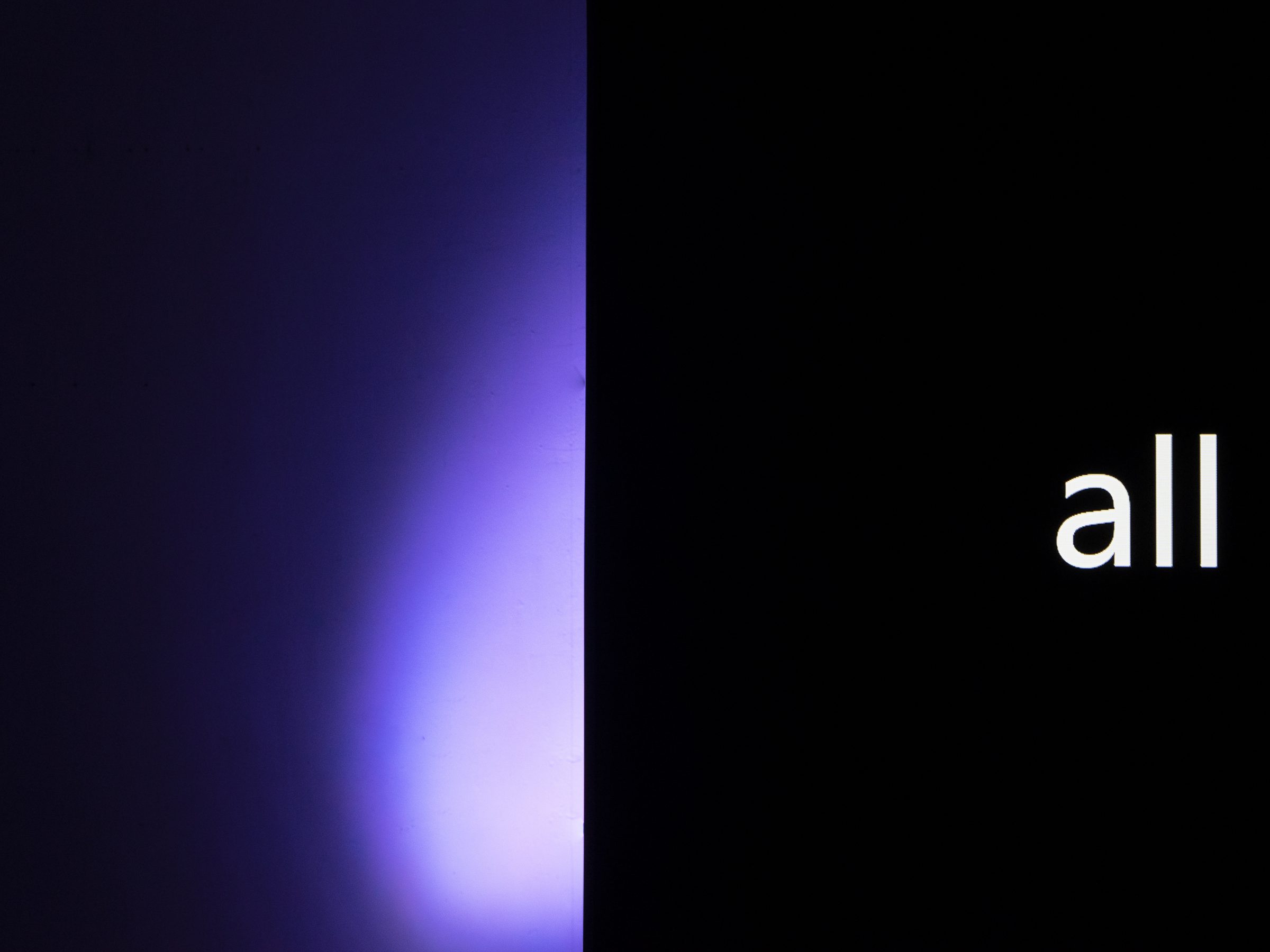
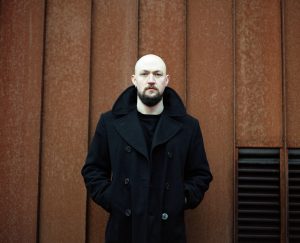 Samuel Brzeski’s (1988, London) current work deals with the situation of language within a post-digital context, particularly in relation to articulations of affect. His works search out the place and presence of the emotive body within the swirl of excess language surrounding the contemporary subject. Working primarily with acts of reading and vibrational semantics, the works investigate how the emotional impacts of digital culture are manifested through language in its many malleable forms. Reconfigurations of existing texts feature prominently, with texts selected for their poetic and political vibrations. A guiding principle of inherent rhythmicity is seen throughout the projects, which materialise as multimedia installations, vocal performances, and hybrid texts.
Samuel Brzeski’s (1988, London) current work deals with the situation of language within a post-digital context, particularly in relation to articulations of affect. His works search out the place and presence of the emotive body within the swirl of excess language surrounding the contemporary subject. Working primarily with acts of reading and vibrational semantics, the works investigate how the emotional impacts of digital culture are manifested through language in its many malleable forms. Reconfigurations of existing texts feature prominently, with texts selected for their poetic and political vibrations. A guiding principle of inherent rhythmicity is seen throughout the projects, which materialise as multimedia installations, vocal performances, and hybrid texts.
 Simone Hooymans (1974) is born in the Netherlands and for the past 10 years has been living and working in Norway. She graduated from the Art academy for visual art in Arnhem (Artez) and the Art Academy Breda (St.Joost) in the Netherlands. Hooymans is an awarded filmmaker and has participated in a number of international group exhibitions and film festivals. Among others, Ars Electronica (2009), Høstutstillingen (2017/2019), Vestlandsutstillingen (2017), Grimstad Short Film Festival, the Beijing Short Film Festival, the Suwon IPark Museum of Art in South Korea. She won the audience award for best animation during the animation festival ReAnima in Bergen in November 2020 for the film Earthfall.
Simone Hooymans (1974) is born in the Netherlands and for the past 10 years has been living and working in Norway. She graduated from the Art academy for visual art in Arnhem (Artez) and the Art Academy Breda (St.Joost) in the Netherlands. Hooymans is an awarded filmmaker and has participated in a number of international group exhibitions and film festivals. Among others, Ars Electronica (2009), Høstutstillingen (2017/2019), Vestlandsutstillingen (2017), Grimstad Short Film Festival, the Beijing Short Film Festival, the Suwon IPark Museum of Art in South Korea. She won the audience award for best animation during the animation festival ReAnima in Bergen in November 2020 for the film Earthfall.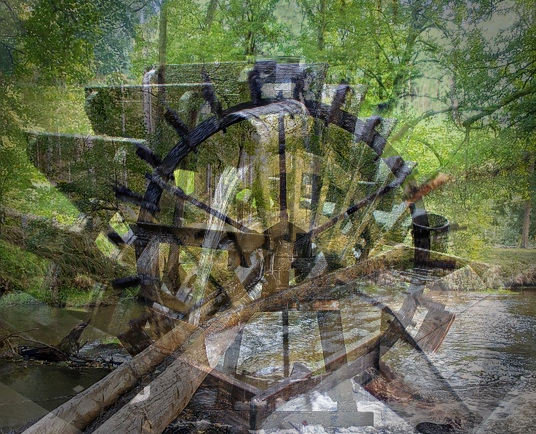
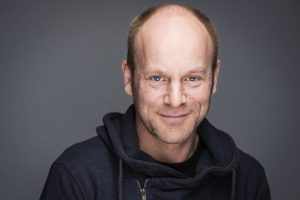 Øyvind Brandtsegg is a composer and performer working in the fields of computer improvisation and sound installations. He has a deep interest in developing new instruments and audio processing methods for artistic purposes, and he has contributed novel extensions to both granular synthesis, feedback systems, and live convolution techniques. Brandtsegg has participated on more than 25 music albums in a variety of genres. Since 2010 he is a professor of music technology at NTNU, Trondheim, Norway.
Øyvind Brandtsegg is a composer and performer working in the fields of computer improvisation and sound installations. He has a deep interest in developing new instruments and audio processing methods for artistic purposes, and he has contributed novel extensions to both granular synthesis, feedback systems, and live convolution techniques. Brandtsegg has participated on more than 25 music albums in a variety of genres. Since 2010 he is a professor of music technology at NTNU, Trondheim, Norway.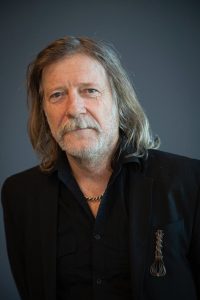 Erlend Leirdal (b. 1964) has worked with wood all his life and is very close to the legacy of ancient wood culture. The properties of the grown wood help to determine the design of his art, and from there grow the ideas that become three-dimensional works. That wood as a living material also changes in the face of weather and wind, Leirdal takes as a natural part of the work, and performance and other physical approaches also play a role in his art. Leirdal’s art has been purchased by i.a. The National Museum and KODE.
Erlend Leirdal (b. 1964) has worked with wood all his life and is very close to the legacy of ancient wood culture. The properties of the grown wood help to determine the design of his art, and from there grow the ideas that become three-dimensional works. That wood as a living material also changes in the face of weather and wind, Leirdal takes as a natural part of the work, and performance and other physical approaches also play a role in his art. Leirdal’s art has been purchased by i.a. The National Museum and KODE.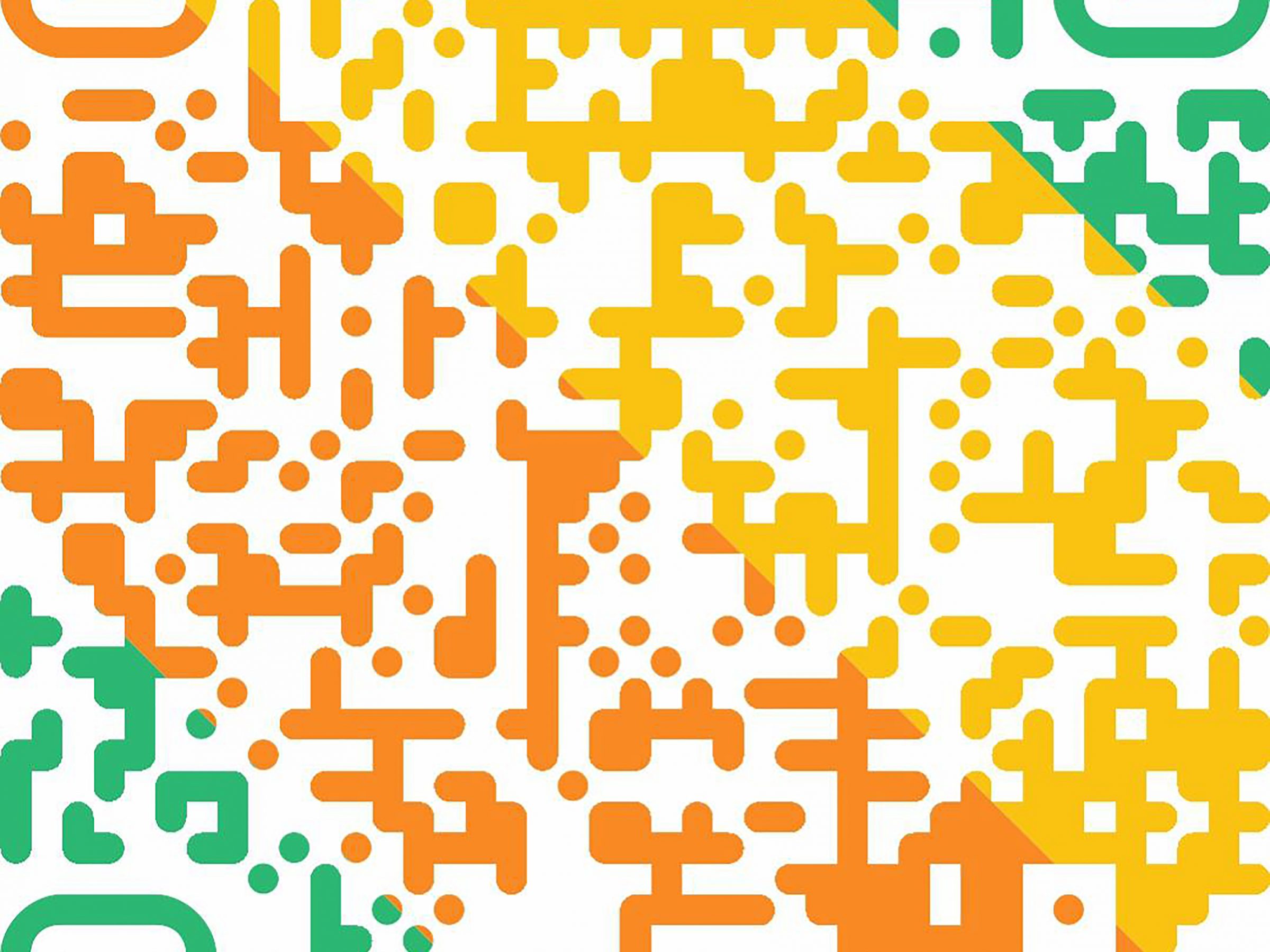
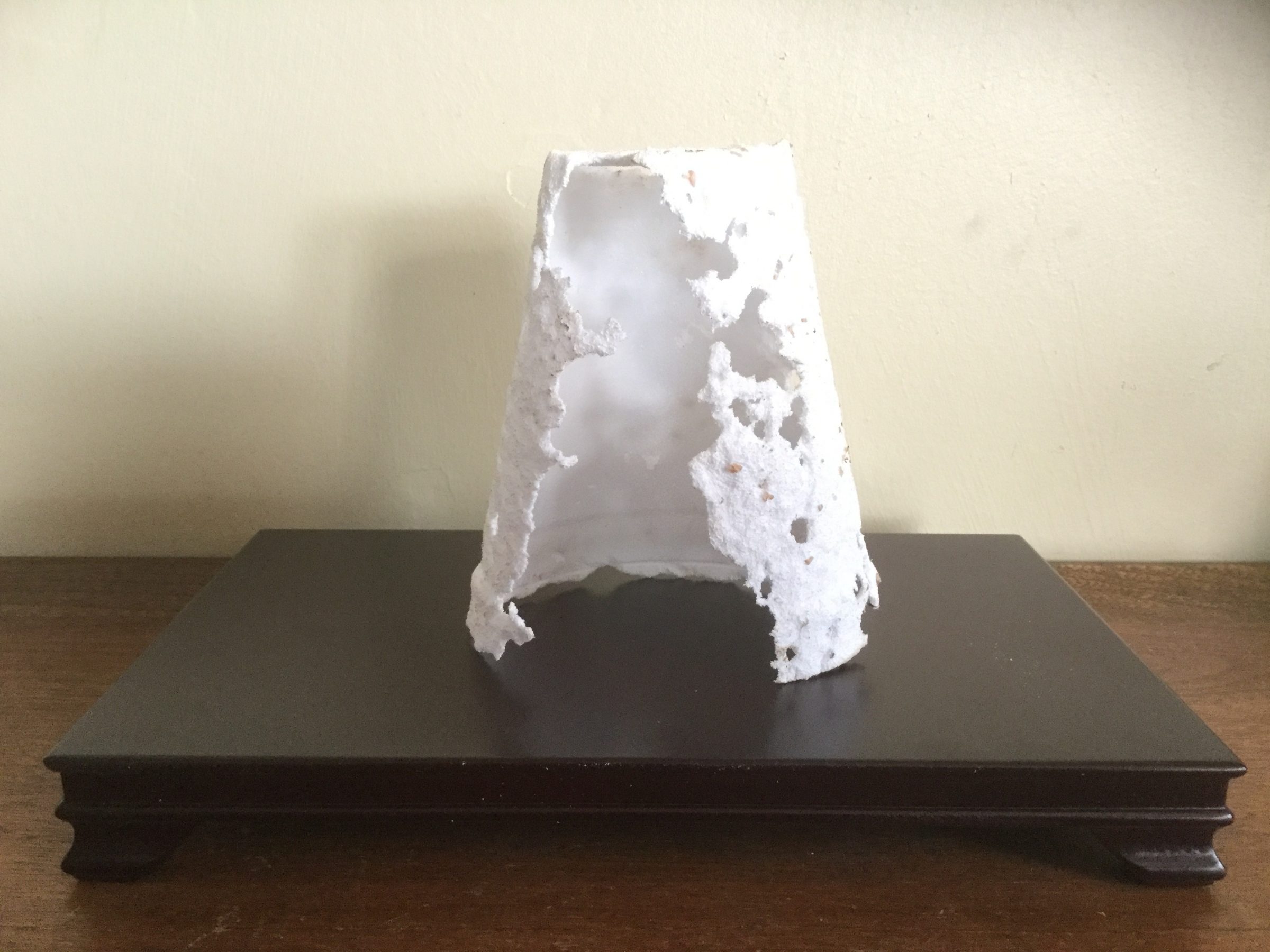
 Oliver Kellhammer is an artist, writer, and researcher who seeks, through his botanical interventions and social art practice, to demonstrate nature’s surprising ability to recover from damage. Recent work has focused on the psychosocial effects of climate change, decontaminating polluted soil, reintroducing prehistoric trees to landscapes impacted by industrial logging, and cataloging the biodiversity of brownfields. He is currently a lecturer in sustainable systems at Parsons, NY.
Oliver Kellhammer is an artist, writer, and researcher who seeks, through his botanical interventions and social art practice, to demonstrate nature’s surprising ability to recover from damage. Recent work has focused on the psychosocial effects of climate change, decontaminating polluted soil, reintroducing prehistoric trees to landscapes impacted by industrial logging, and cataloging the biodiversity of brownfields. He is currently a lecturer in sustainable systems at Parsons, NY.